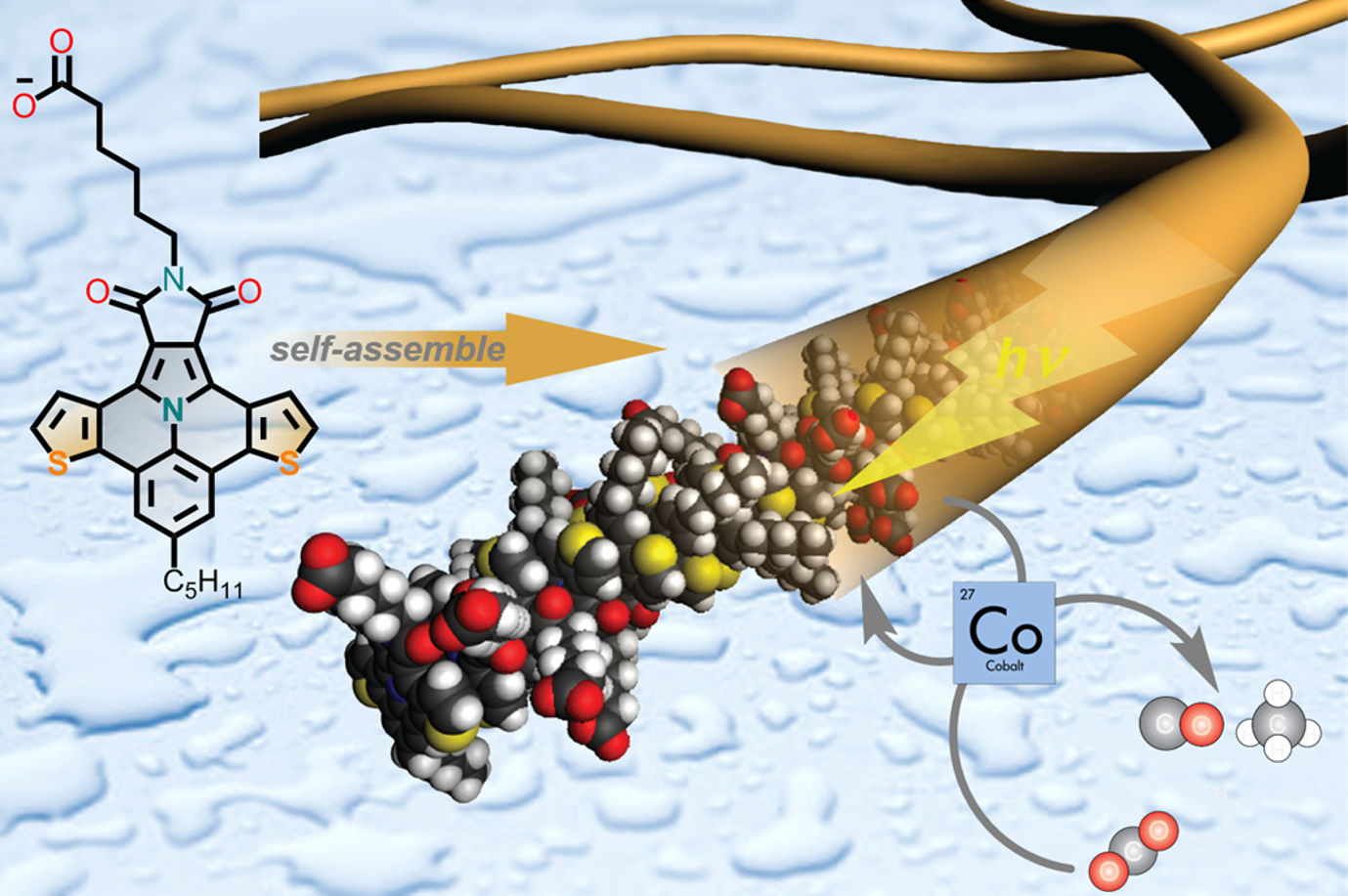Photocatalytic Aqueous CO2 Reduction to CO and CH4 Sensitized by Ullazine Supramolecular Polymers
Scientific Achievement
Self-assembled organic molecules photosensitize a cobalt molecular catalyst to reduce CO2 to CO and CH4 in water

Diareno-ullazine molecules undergo self-assembly in water to form fibrous supramolecular polymers. Under visible light, these assemblies sensitize a cobalt molecular catalyst and convert CO2 to CO and CH4.
Significance and Impact
This is a first example of a hydrogel soft material that can photoreduce CO2 under visible-light
Research Details
-
The monomers contain diareno-fused ullazine molecules and undergo supramolecular polymerization in water to create entangled nanoscale fibers forming a soft hydrated material
-
Self-assembly affords the capture of a wider energy range of visible light photons through red-shifting and spectral broadening, making it possible to use of visible light to drive the photocatalysis
-
Under 450 nm visible light these supramolecular nanofibers sensitize a dinuclear cobalt catalyst for CO2 photoreduction to generate carbon monoxide and methane using a sacrificial electron donor. The supramolecular photocatalytic system can generate amounts of CH4 comparable to those obtained with a precious metal-based [Ru(phen)3](PF6)2 sensitizer and, in contrast to Ru-based catalysts, retains photocatalytic activity in all aqueous media over 6 days
Photocatalytic Aqueous CO2 Reduction to CO and CH4 Sensitized by Ullazine Supramolecular Polymers
Dumele, O.; Ðorđević, L.; Sai, H.; Cotey, T.; Sangji H. M.; Kohei, S.; Dannenhoffer, A.; Stupp, S. I.
Journal of the American Chemical Society, 144, 7, 3127, 2022
Work Performed at Northwestern University.
